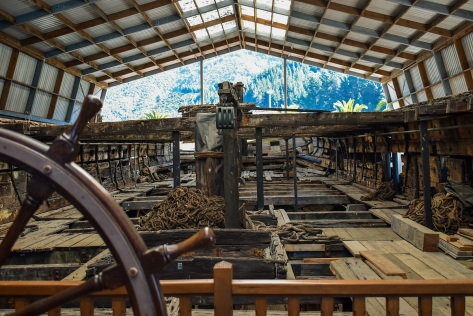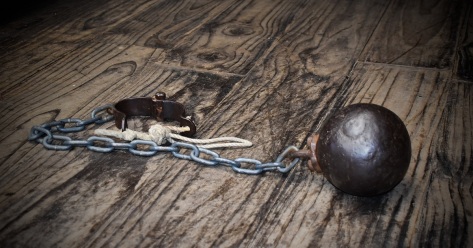Look at these photos. Just look. I took hundreds and there honestly wasn’t a single bad one. This place is amazing! Beautiful, otherworldly… straight out of a fairy tale. And I bet you never knew it existed.

It’s called Whitecliffs Boulders. It’s in New Zealand, of course, kind of near Taihape. You know, the place with the giant gumboot? Follow State Highway 1 south a bit, through Mangaweka and out into the wop-wops.
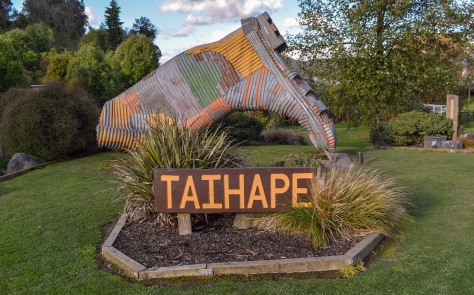
Like, a fair bit out into the wop-wops. You’ll end up driving so far down a dodgy-looking road, you’ll start to lose confidence in your path, but keep going. Our two-berth campervan made it, but I would have been concerned in anything bigger. We had to swerve to avoid an escaped lamb at one point.
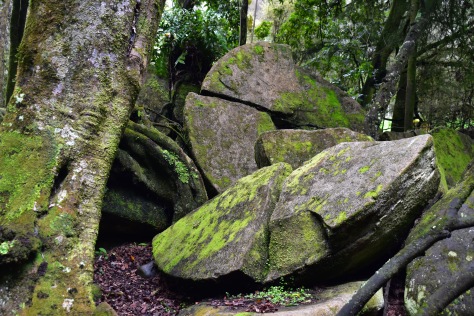
The Whitecliffs Boulders are on someone’s private farmland. There isn’t really a car park; you park next to a gate, surrounded by sheep, and pop a fiver into the honesty box. Oh yeah, make sure you bring the correct amount of cash.
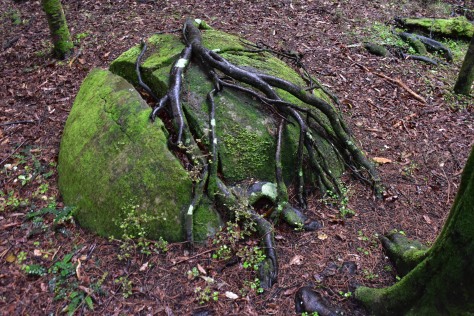
I also recommend you bring wellies – or, as Kiwis call them, gumboots – as it’s a bit of a muddy trek to reach the boulders. You follow a non-existent path through some boggy sheep pastures and down a steep dirt road. I kept slipping in my poor, unfortunate trainers.
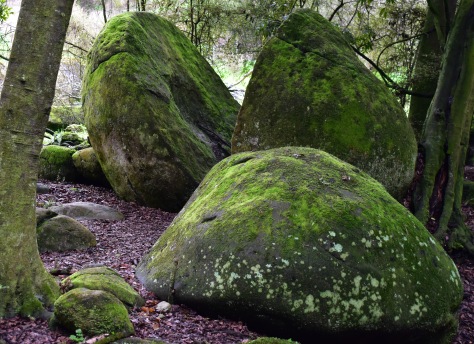
The walk there’s not too bad, though take a picnic for when you get to the boulders, as you’ll need plenty of energy for the walk back! Also, there’s a clearing in which the owner has placed some little tables and chairs, which makes for a charming scene.
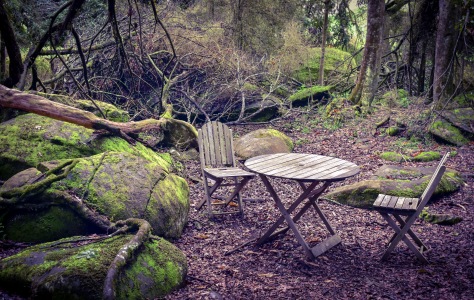
The boulders are scattered about a miniature forest on a riverbank, all winding pathways and fairy ponds, and they are MAGICAL. Like, how did I not know about this place years ago? It’s the perfect setting for fairies and trolls. Even when it started to rain, I didn’t want to leave.
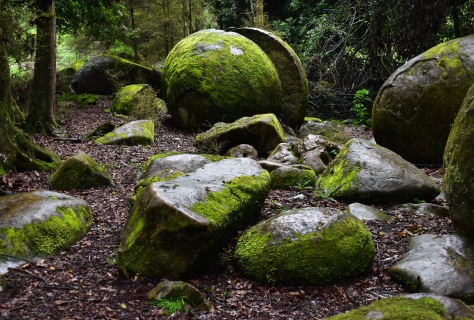
But leave, we had to, as we were getting soaked. Easier said than done. The rain had turned the muddy road into a full-on mudslide. And not the sort of mud that comes off. The sort that sticks to the soles of your shoes until you’re wearing heavy, grey platforms.
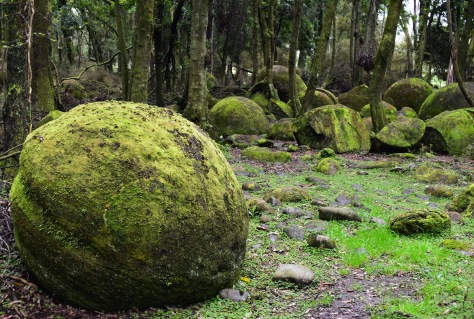
Next thing I knew, I was sliding uncontrollably downwards, coating my arse, arms, legs and backpack in a thick, cold, cement-like layer of mud that I had to scoop off with mud-and-sheep-shit-clogged fingers.
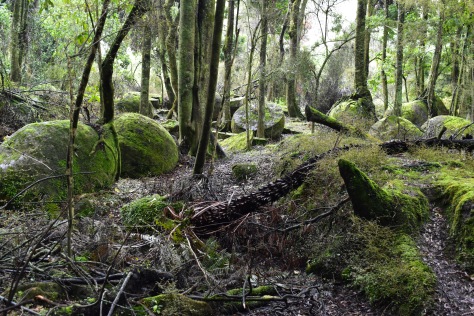
Walking (and climbing on all fours up the mudslide) back to the campervan took a whole age of this world. And a lot of involuntary screams of terror on my part, every time I slipped. My fiancé was worried the farmer would think he was murdering me!
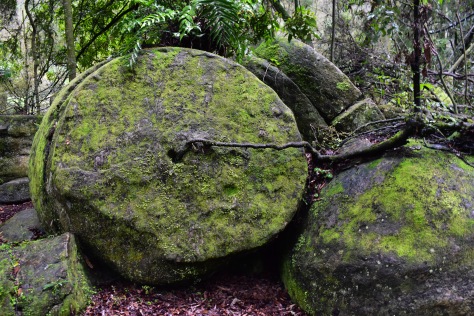
We had to strip to our underwear so as not to smear mud all around the inside of the campervan. I really hoped the farmer wouldn’t choose now to show up! We’d have to chisel the mud off our clothes later.
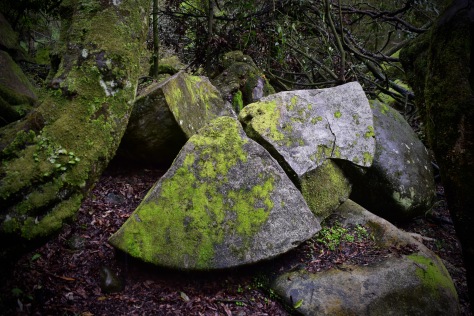
So, if you too want to visit the magical Whitecliffs Boulders, remember to take: sturdy shoes and clothes you don’t mind sacrificing to the mud sprites, five dollars in cash, and sufficient sustenance. Oh, and insect repellent.
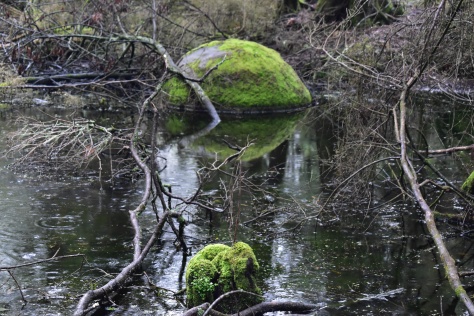
Also, be warned that there’s no cellphone reception and you need to be able-bodied. And don’t go in a vehicle you wouldn’t trust on a narrow, steep and winding gravel road that may or may not be half-crumbling down a cliff at one point.
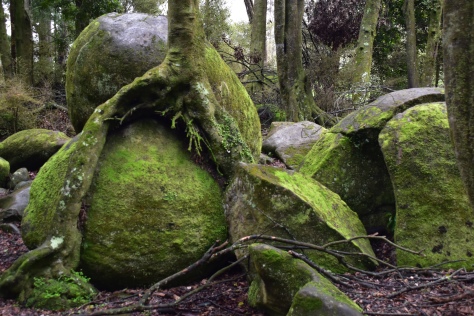
But don’t let any of the above put you off. For me, the fantastical sight of the boulders in the forest was more than worth the battle with the mud sprites. I mean just look at the photos!
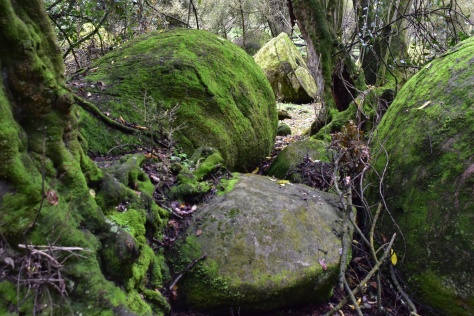
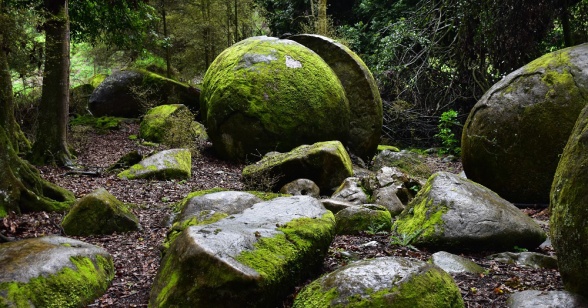
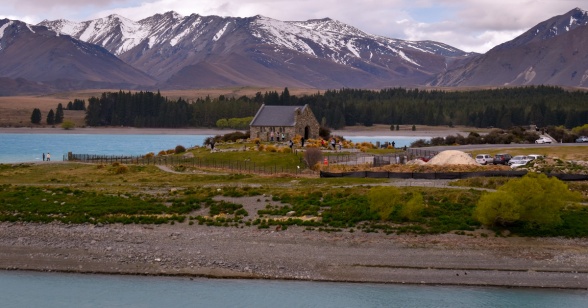

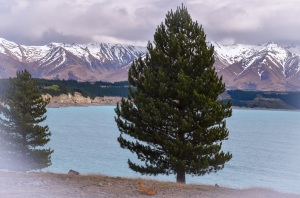
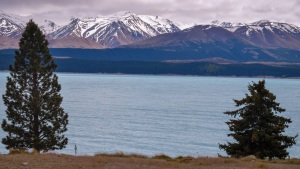


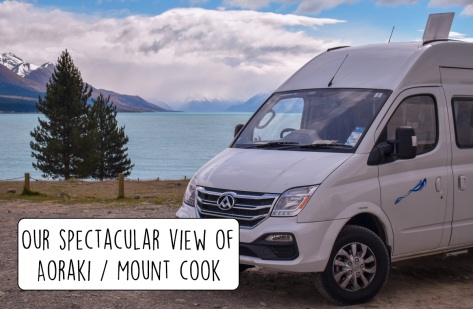

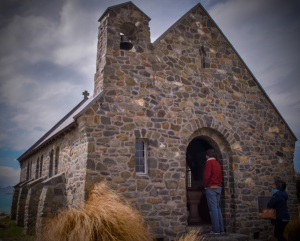
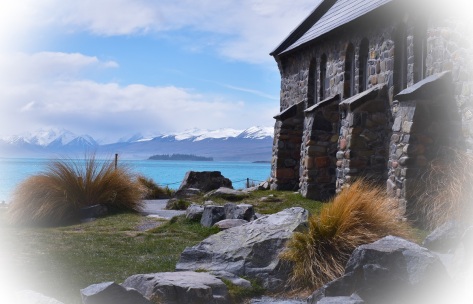
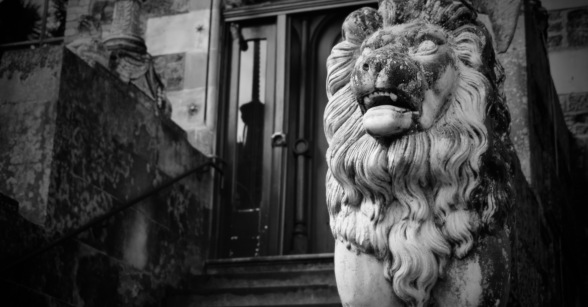
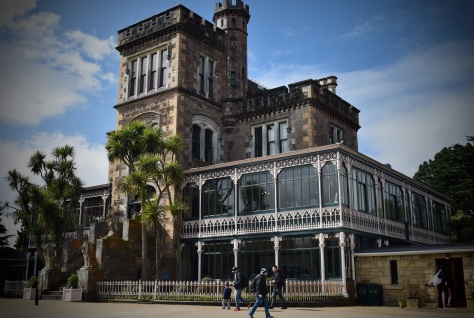
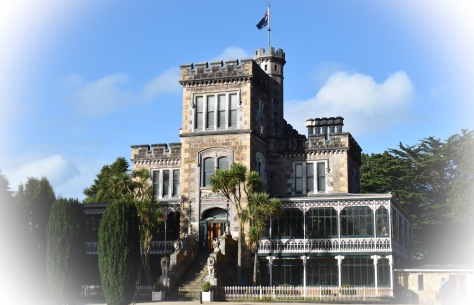

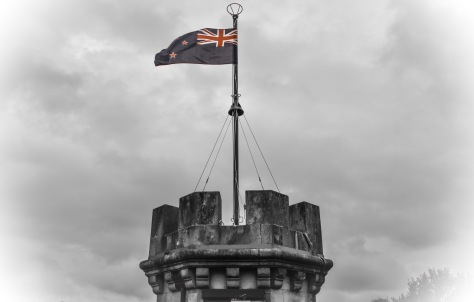
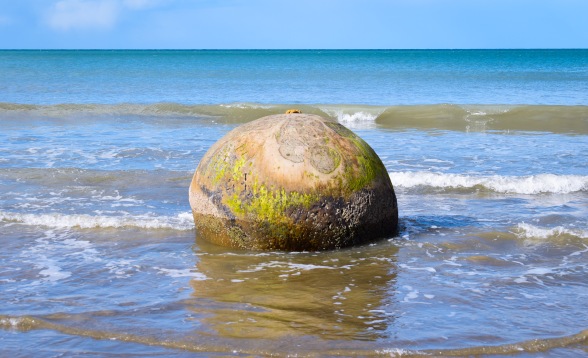
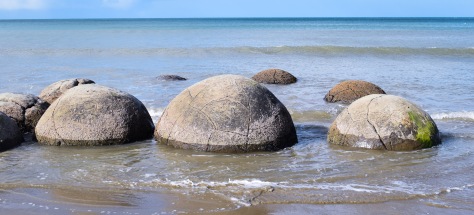
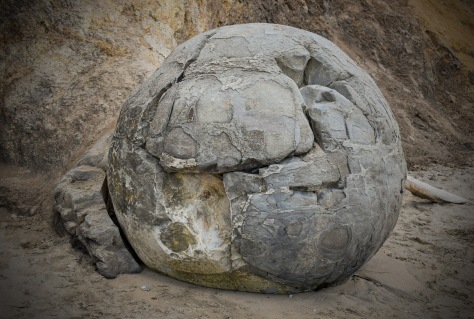
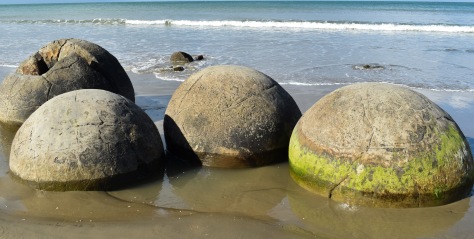
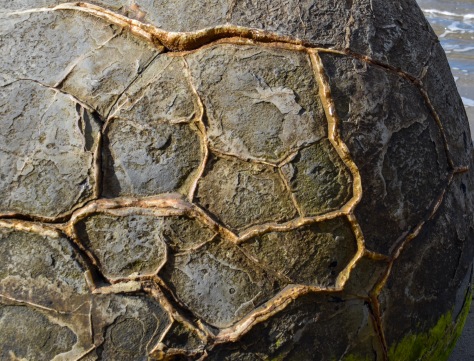
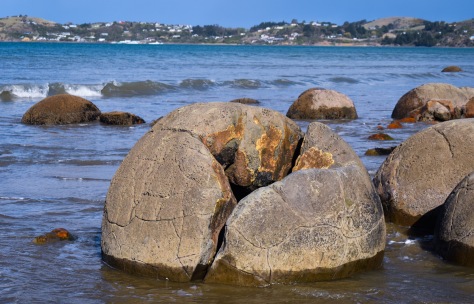
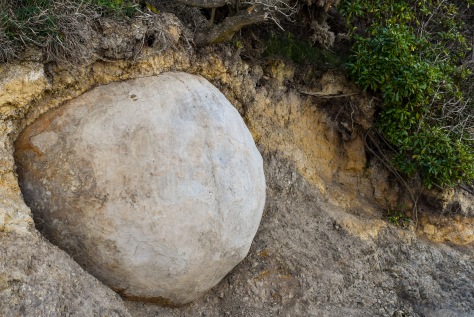
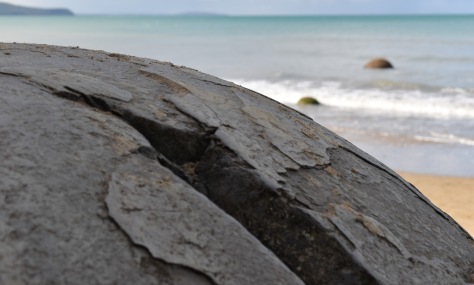
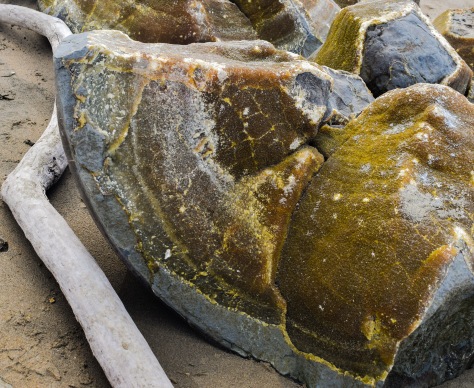
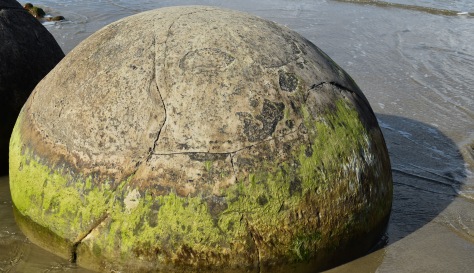
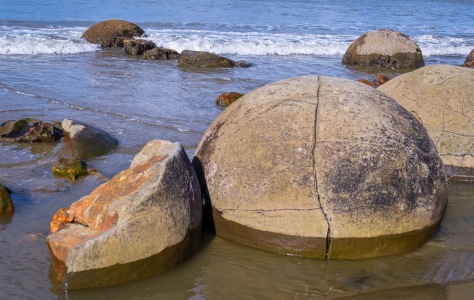
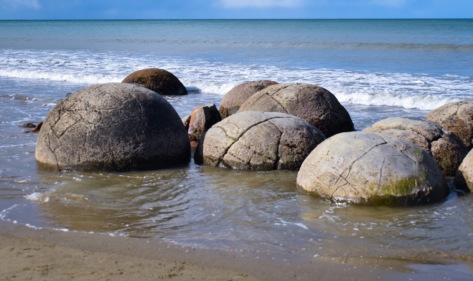
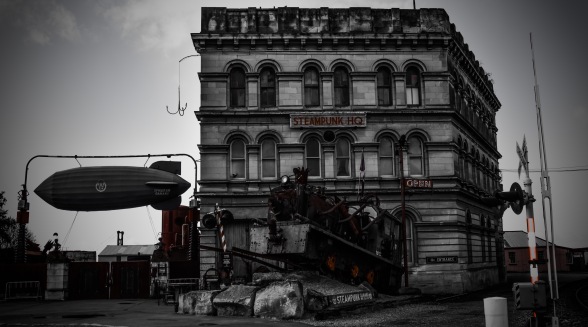
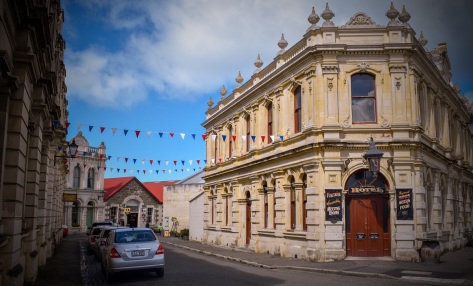
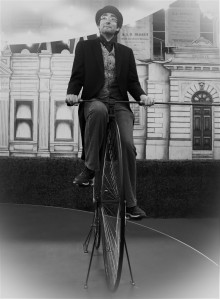 Both bookshops were interestingly decorated. The first I visited,
Both bookshops were interestingly decorated. The first I visited, 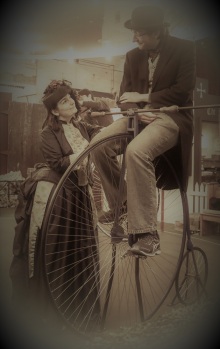 The Victorian Precinct is right by the harbour, where you’ll find a large, steampunk-themed playground and a rather good pub called
The Victorian Precinct is right by the harbour, where you’ll find a large, steampunk-themed playground and a rather good pub called 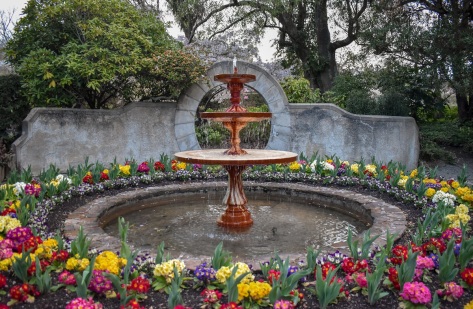
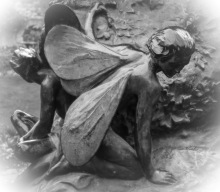
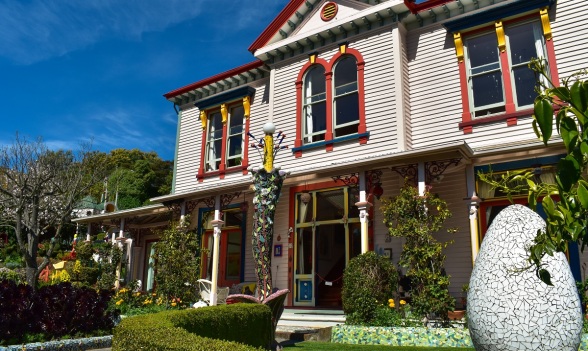

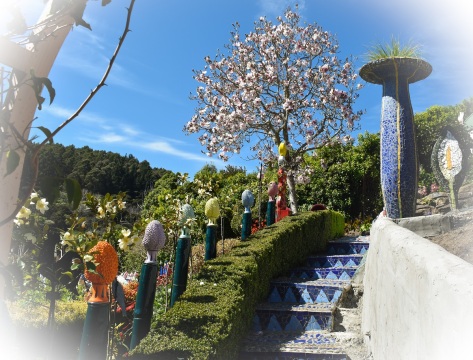
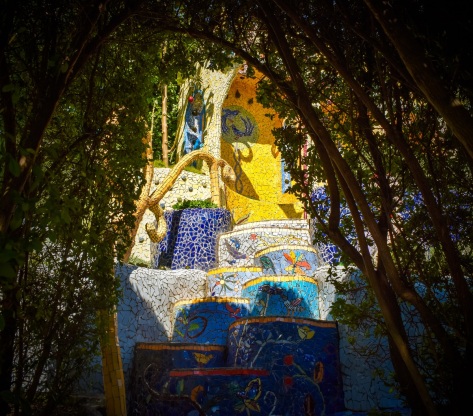
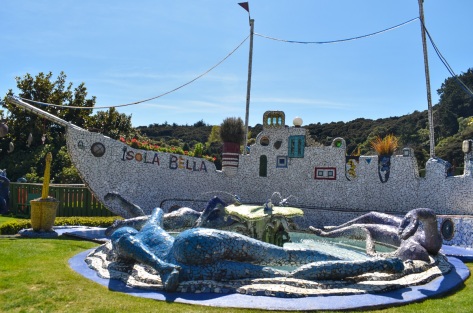
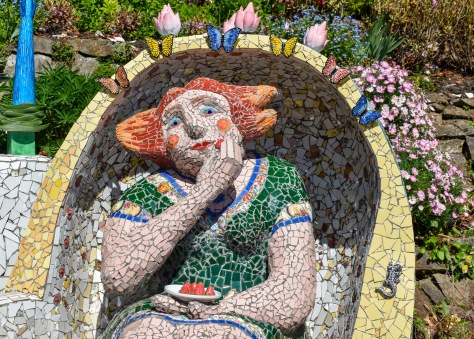
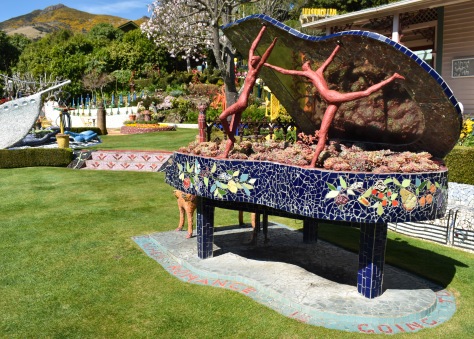
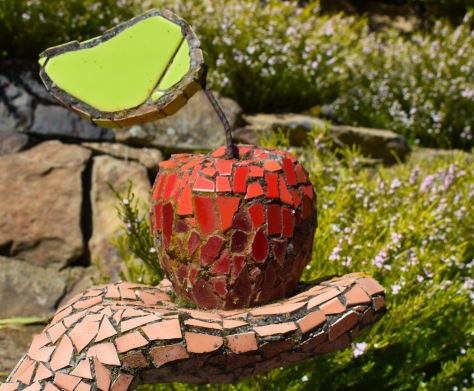
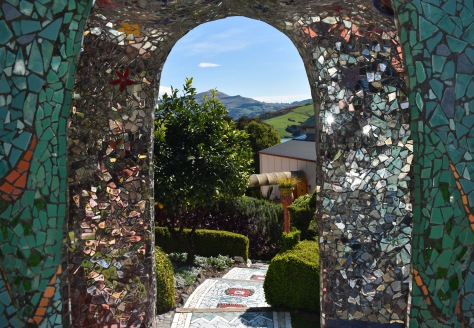
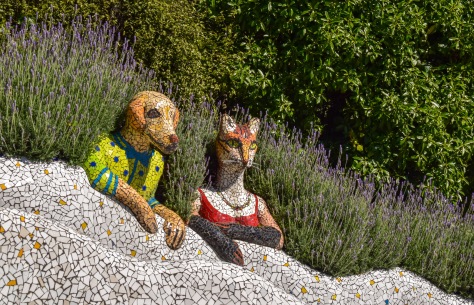
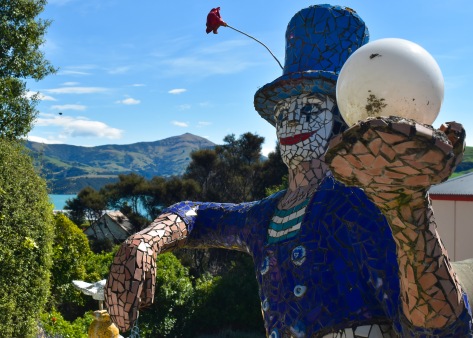
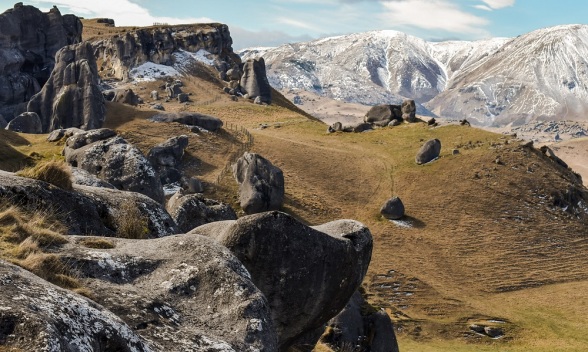
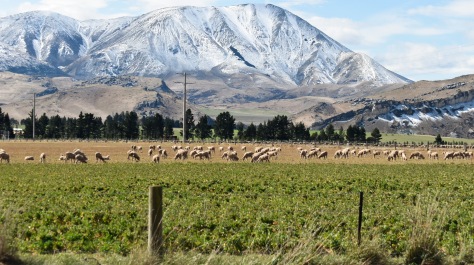
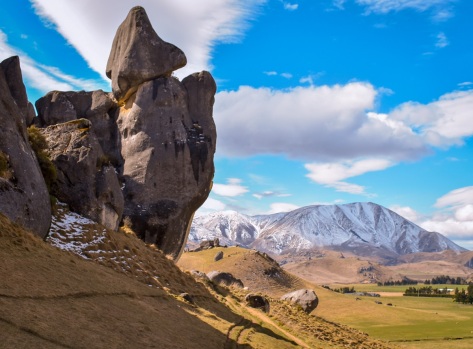
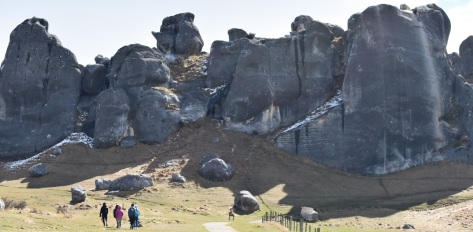
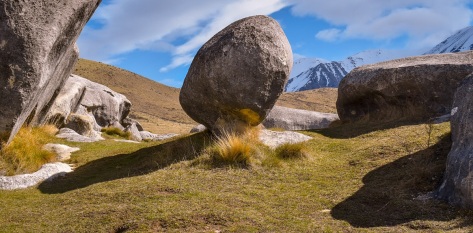
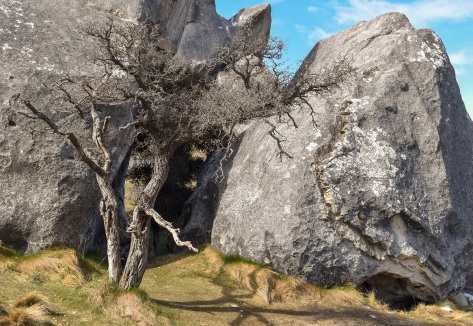
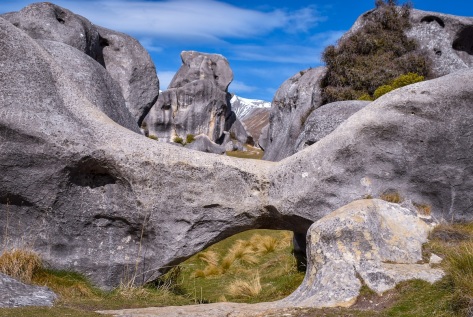

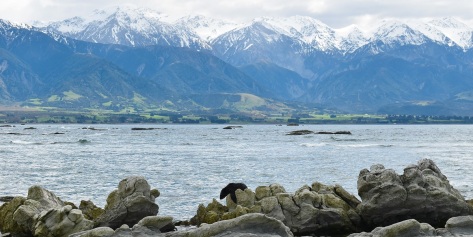
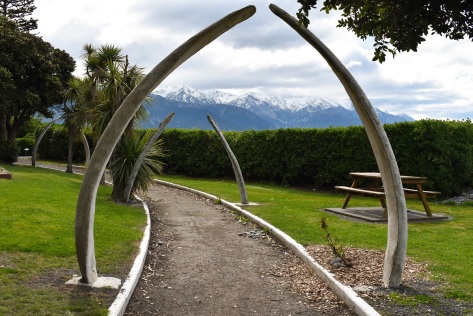
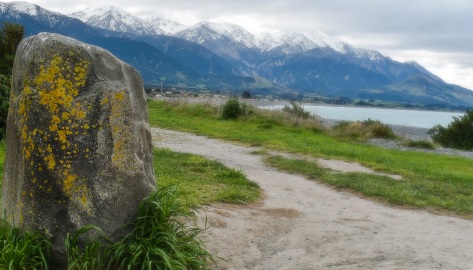
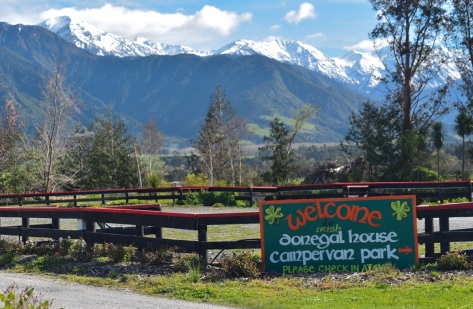
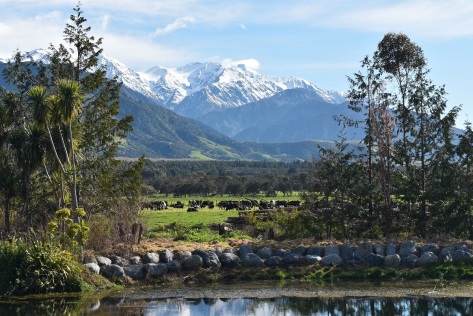
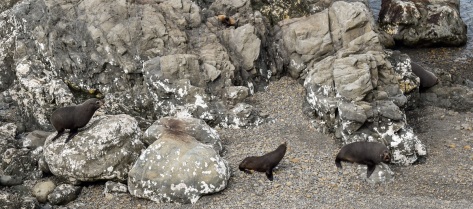
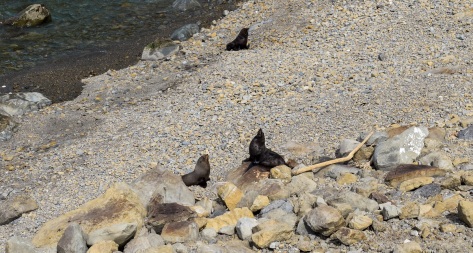
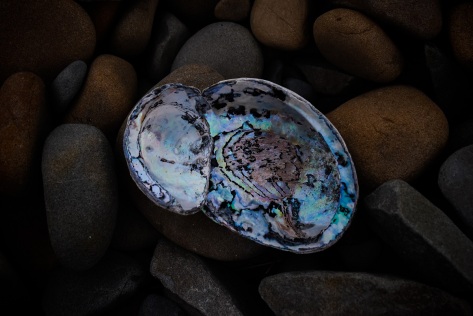
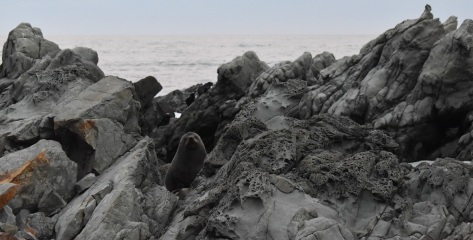
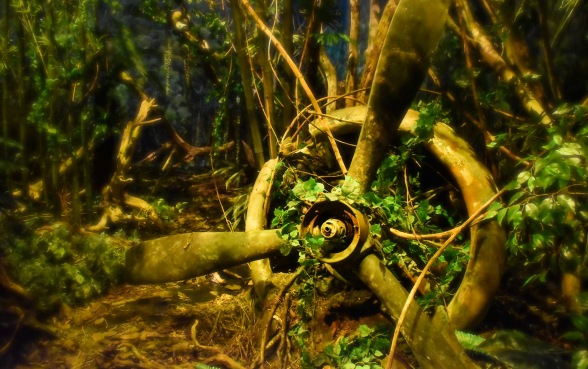
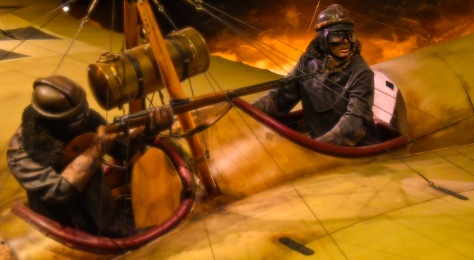
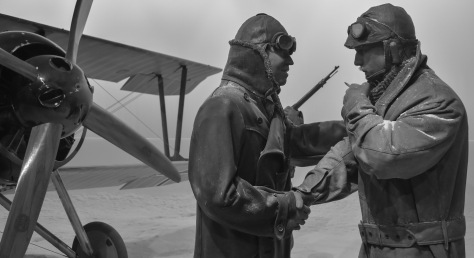
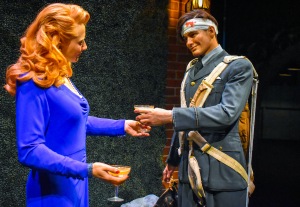 My favourite part of the museum is the one dedicated to WWII planes, perhaps because it has even more focus on raw human experience than the WWI part. You enter the exhibition through a recreated air raid shelter, a gloomy tunnel adorned with wartime posters. The muffled sounds of planes and bombs, accompanied by the eerie whine of an air raid siren, make it wonderfully spooky. You emerge from the tunnel to be faced with a life-sized diorama of a lovely moment involving a Kiwi pilot who’s just crash-landed onto some toff’s country estate in the middle of a garden party. He’s being offered a glass of champagne.
My favourite part of the museum is the one dedicated to WWII planes, perhaps because it has even more focus on raw human experience than the WWI part. You enter the exhibition through a recreated air raid shelter, a gloomy tunnel adorned with wartime posters. The muffled sounds of planes and bombs, accompanied by the eerie whine of an air raid siren, make it wonderfully spooky. You emerge from the tunnel to be faced with a life-sized diorama of a lovely moment involving a Kiwi pilot who’s just crash-landed onto some toff’s country estate in the middle of a garden party. He’s being offered a glass of champagne. I suppose I shouldn’t give the whole thing away, but I will say there’s a quite amazingly immersive cinematic experience pertaining to the Battle of Stalingrad. You actually feel like you’re there, which is incredible, but I imagine it would give some children nightmares, and trigger distressing flashbacks for certain soldiers and refugees. It left me weirdly winded. There’s also a bit about the Nazis that has a giant swastika flag hanging above it. This, according to the old veteran guide I got chatting to, has proven a tad controversial.
I suppose I shouldn’t give the whole thing away, but I will say there’s a quite amazingly immersive cinematic experience pertaining to the Battle of Stalingrad. You actually feel like you’re there, which is incredible, but I imagine it would give some children nightmares, and trigger distressing flashbacks for certain soldiers and refugees. It left me weirdly winded. There’s also a bit about the Nazis that has a giant swastika flag hanging above it. This, according to the old veteran guide I got chatting to, has proven a tad controversial. The guide was lovely, but, having mistaken me for the mother of the children in another part of the exhibition with their father, went to great lengths to emphasize a part of the exhibition that might be of more interest to “womenfolk”, and seemed surprised that I was relatively knowledgeably about certain things already. (I took great relish in flaunting my knowledge after this realisation, never revealing, of course, that aviation history isn’t really my cup of tea, my knowledge having been transferred by osmosis from a lifetime of proximity to my father.) Almost annoyingly, I did find the part of the exhibition about the Russian female fighter pilots – the Night Witches – especially interesting.
The guide was lovely, but, having mistaken me for the mother of the children in another part of the exhibition with their father, went to great lengths to emphasize a part of the exhibition that might be of more interest to “womenfolk”, and seemed surprised that I was relatively knowledgeably about certain things already. (I took great relish in flaunting my knowledge after this realisation, never revealing, of course, that aviation history isn’t really my cup of tea, my knowledge having been transferred by osmosis from a lifetime of proximity to my father.) Almost annoyingly, I did find the part of the exhibition about the Russian female fighter pilots – the Night Witches – especially interesting.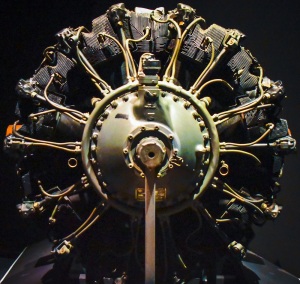 The two most impressive displays, I thought, were the one focusing on the ace fighter Lydia Litvyak, known as the White Rose of Stalingrad, and the one focusing on the bomber crashed into a patch of Pacific jungle. I made sure my fiancé experienced the Stalingrad section, because his grandfather, a German soldier, was actually stationed at Stalingrad, but was recalled to Germany for officer training just days before the battle began. It wasn’t until after the war that he discovered every single one of his friends who’d been at Stalingrad had died.
The two most impressive displays, I thought, were the one focusing on the ace fighter Lydia Litvyak, known as the White Rose of Stalingrad, and the one focusing on the bomber crashed into a patch of Pacific jungle. I made sure my fiancé experienced the Stalingrad section, because his grandfather, a German soldier, was actually stationed at Stalingrad, but was recalled to Germany for officer training just days before the battle began. It wasn’t until after the war that he discovered every single one of his friends who’d been at Stalingrad had died.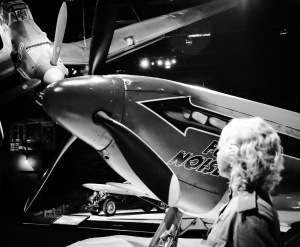 Now Omaka is quite an expensive museum to visit – $40 if you want to go ’round all of it. The money does go towards improving the museum, however. They want to build an Art Deco bit to go in-between the First and Second World War bits, for example. You can also go for a plane ride if you want. Oh, and there are some amusing T-shirts in the gift shop that say “Old Fokker”!
Now Omaka is quite an expensive museum to visit – $40 if you want to go ’round all of it. The money does go towards improving the museum, however. They want to build an Art Deco bit to go in-between the First and Second World War bits, for example. You can also go for a plane ride if you want. Oh, and there are some amusing T-shirts in the gift shop that say “Old Fokker”!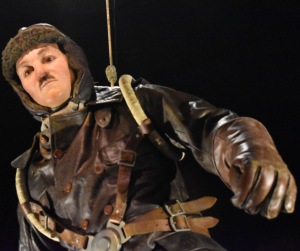 So, if you love planes, or military history, or Peter Jackson, you’ll be in heaven in the Omaka Aviation Heritage Museum. If you don’t, you’ll still enjoy it. Like I said before, aviation history isn’t my thing, but I’m dead keen to go back once they’ve finished the Art Deco exhibition. It’s because Peter Jackson’s displays have allowed the exhibitions to highlight the human experience surrounding the planes, not merely the technical aspects of the planes themselves. Human stories are what make history so powerful.
So, if you love planes, or military history, or Peter Jackson, you’ll be in heaven in the Omaka Aviation Heritage Museum. If you don’t, you’ll still enjoy it. Like I said before, aviation history isn’t my thing, but I’m dead keen to go back once they’ve finished the Art Deco exhibition. It’s because Peter Jackson’s displays have allowed the exhibitions to highlight the human experience surrounding the planes, not merely the technical aspects of the planes themselves. Human stories are what make history so powerful.
